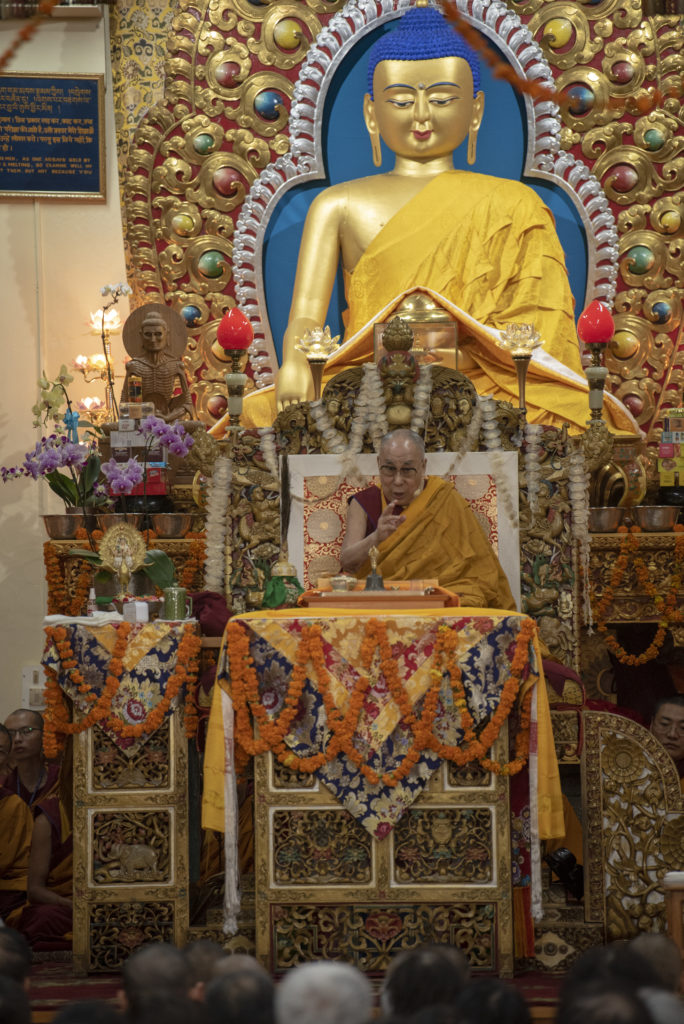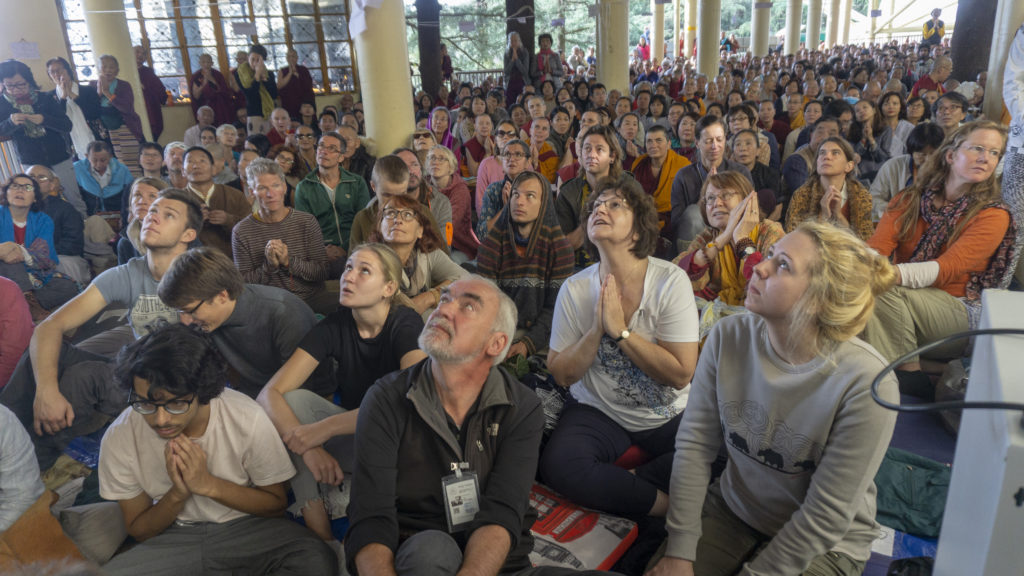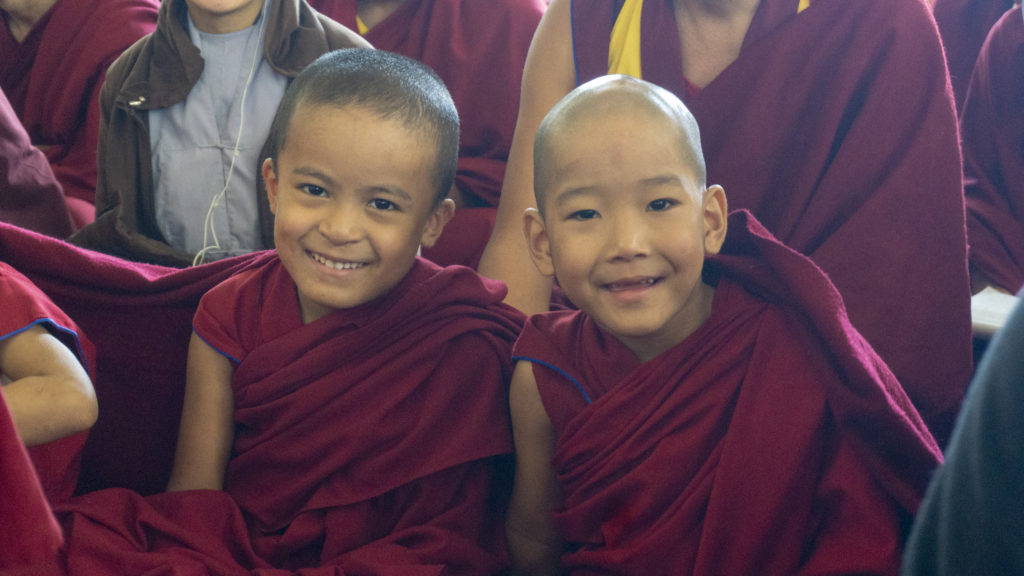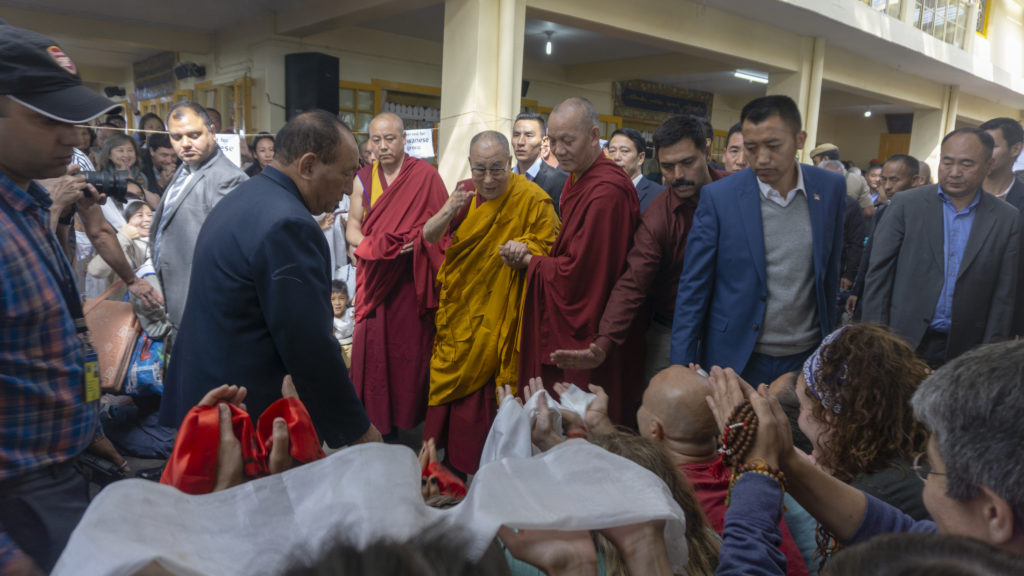Dharamshala: Tibetan spiritual leader His Holiness the Dalai Lama today concluded the three-day teaching on Nagarjuna’s Precious Garland of the Middle Way and bestowed Mayura’s (peacock deity) permission initiation to the devotees gathered at Tsuglakhang.
His Holiness began his teaching by explaining the means of attaining higher rebirth or higher good. With regard to higher rebirth, His Holiness remarked that though attaining higher rebirth is something good but it is often difficult as the psychophysical aggregates humans exhibits are under the influence of karma and delusion. His Holiness asserted that It is not enough for humans to just accumulate merit but they also need to purify the negativities. Negativities meaning the flawed qualities that tend to make one unruly. His Holiness mentioned that Buddha taught about true suffering, true origins, and then true cessation to address those negativities.
“Therefore it is important to know what are those factors which causes one to have such an undisciplined state of mind and then apply the antidote correctly so that we are able to see that these misconceptions and negative state of mind do not have any support of correct knowledge and valid cognition.” said His Holiness the Dalai Lama.
He further asked to understand the true nature of things with wisdom and intelligence to overcome the afflictions.
His Holiness also stated that knowing reality and truth goes against those of misconceptions and mental afflictions. For instance, if one look at a form it appears as if it has some objective existence but when you confirm through use of one’s own knowledge and experience then it is found that this is not how form exists, In other words, it does not exist as it appears, as a result, the true independent existence of the form is eliminated. Therefore, to attain the higher rebirth, His holiness stressed that realising the truth and reality is very important.

His Holiness the Dalai Lama explaining his four principal commitments to the devotees. Photo/Tenzin Jigme/CTA
His Holiness established that the causes of misfortune are due to an unruly mind which refers to a state of mind that brings about restlessness and they are deeply rooted in ignorance. Ignorance is the misconception of reality. So he maintained that if one overcomes this misconception then they can also put an end to the rest of the mental afflictions.
His Holiness further spoke about his four principal commitments in life, namely universal responsibility through promotion of human values; promotion of religious harmony; preservation of Tibet’s rich cultural heritage and finally his commitment to reviving awareness of the value of ancient Indian knowledge to the world at large particularly to the young Indians.
Referring to those commitments, His Holiness shared the importance of love and compassion which is the abiding principles of all human beings despite the surface differences of color, caste, creed, and religion.
“All human beings whether religious or not, believer or not believe in the value of love and compassion,” said His Holiness. He further asserted that these values must be promoted through the medium of education. In regard to the cultivation of such values, His Holiness exemplified the ancient Indian knowledge and wisdom particularly Nalanda tradition to be the best source.
Besides the Sanskrit language, His Holiness mentioned that the Tibetan language is one of the best language to study ancient Indian knowledge on psychology, epistemology, logic and so forth since all these are well preserved in the Tibetan language.
“As an academic subject, this knowledge does not only belong to Tibetans but it belongs to the whole world” pronounced His Holiness.

Devotees listening to His Holiness teaching on the recorder. Photo/Tenzin Jigme/CTA
His Holiness further mentioned that Tibetans have well maintained and preserved their language, culture, and identity in exile thanks to the government of India. But on that same note, he lamented that Tibetans inside Tibet are apparently facing great difficulty when it comes to the preservation and promotion of Tibetan language, culture, and tradition. Remarking on self-immolations inside Tibet, His Holiness stated, “if they can go to that kind of length then it is easy to perceive that they are capable of harming others as well, instead Tibetans have firmly opted for non-violence as their resort”. He mentioned that Tibetans are greatly inspired by Gandhi’s principle of non-violence which initially existed in India for over 1000 years.
His Holiness finally concluded the final day of teaching by advising the devotees to practice Boddhichit in order to overcome the harms brought about by evil beings. And in order to cultivate Buddhichit, he suggested the purification of negativities and accumulation of merit.

Devotees looking at the screening of His Holiness teaching. Photo/Tenzin Jigme/CTA

Little monks and their innocent smiles. Photo/Tenzin Jigme/ CTA

His Holiness bidding goodbye to the devotees as he proceeds towards his residence. Photo/Tenzin Jigme/CTA

